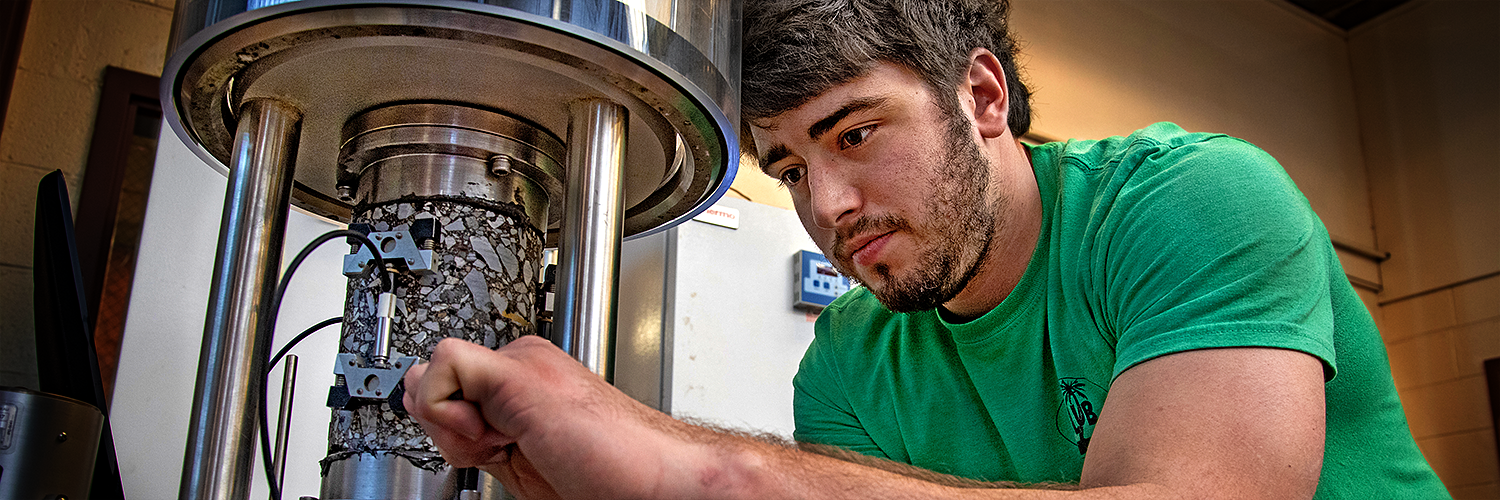
VTRC has many state-of-the-art laboratories and qualified technicians capable of running advanced tests on materials, structures, environmental processes, and soils. Click on any of the options below to learn about our laboratory facilities and capabilities.
The Asphalt Laboratory is an AASHTO-accredited laboratory that offers the capability to perform a wide range of tests on asphalt binders and mixture. Our experienced Asphalt Lab technicians are certified to conduct routine and advanced material characterization-related tests.
The Asphalt Laboratory is divided in two main sections:
Binder Laboratory: Focuses on the rheological and chemical characterization of asphalt binders and emulsions. The Binder Laboratory is equipped with up-to-date tools to determine performance grading such as:
Furthermore, this laboratory provides advanced chemical- based testing using novel Fourier Transform Spectroscopy (FTIR) and Gel Permeable Chromatography (GPC) setups.
Mixture Laboratory: Focuses on the components/recipe, mechanical and performance characterization of asphalt mixtures. The Mixture Laboratory is equipped to perform routine volumetric and other specialty tests such as:
Moreover, the Mixture Laboratory is equipped with four asphalt mixture performance testers (AMPT) capable of comprehensively characterizing the performance of asphalt mixtures.
The Concrete Laboratory can test aggregates, prepare concrete mixtures, and determine the fresh and hardened properties of concrete.
The following tests are conducted in the laboratory:
The laboratory equipment includes:
The Geotechnical Laboratory can perform a variety of soil tests:
The Non-Destructive Testing (NDT) Laboratory houses equipment for performing nondestructive evaluation using acoustic emission, ultrasonic, and visual methods.
The Chemistry and Corrosion Laboratory is equipped for wet chemistry analysis, corrosion related testing, and handheld elemental analysis of materials.
The Structures Laboratory has a wide array of experimental testing equipment to support VTRC's focus of applied research for VDOT, including the following equipment.
In the future, VTRC hopes to add an abrasive water jet cutter for machining steel samples and a Charpy V-notch Impact tester for testing steel impact energy.
The Environmental Lab supports research conducted by three full time research scientists and one graduate research assistant.
Capabilities:
Common Tests:
Last updated: February 27, 2024